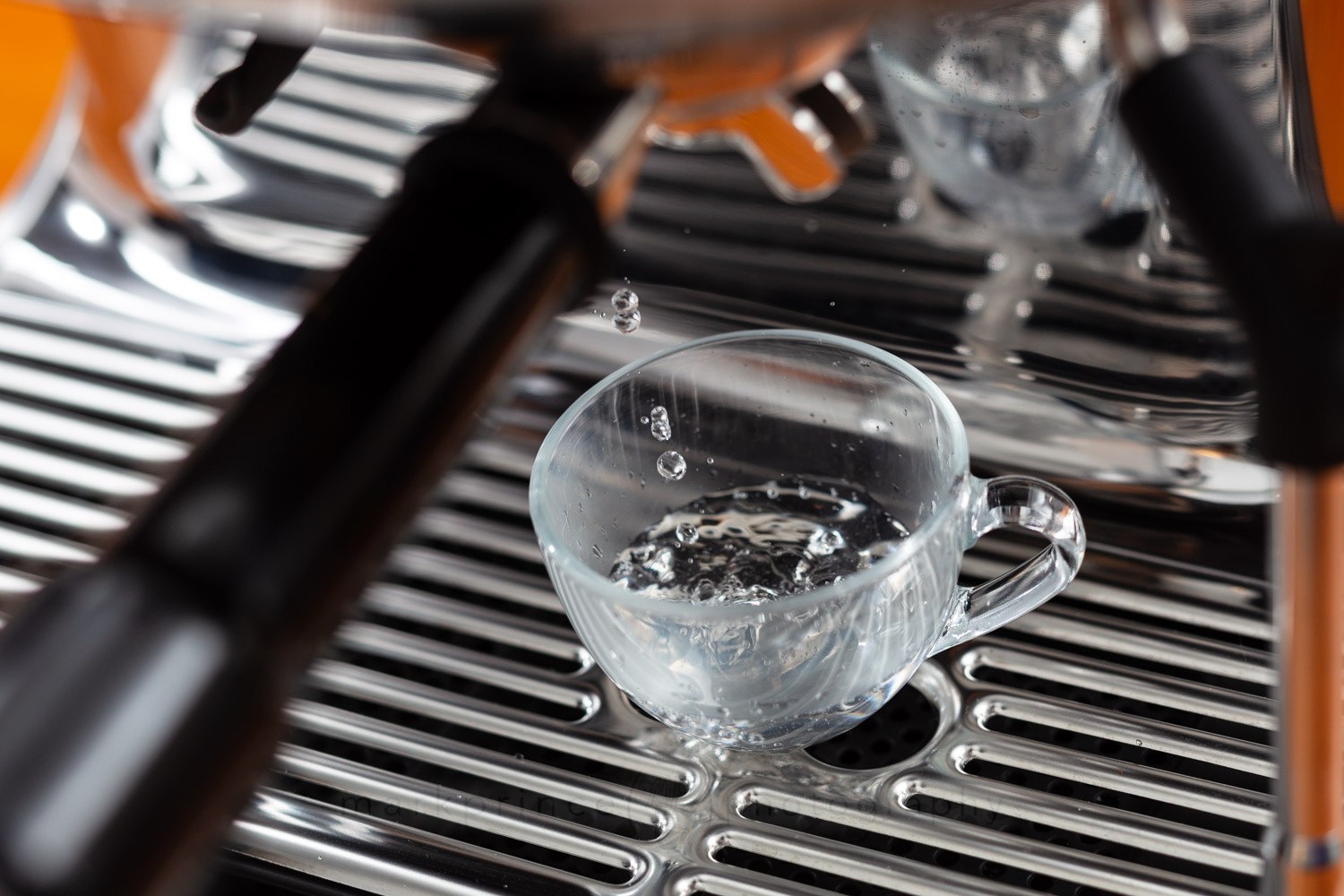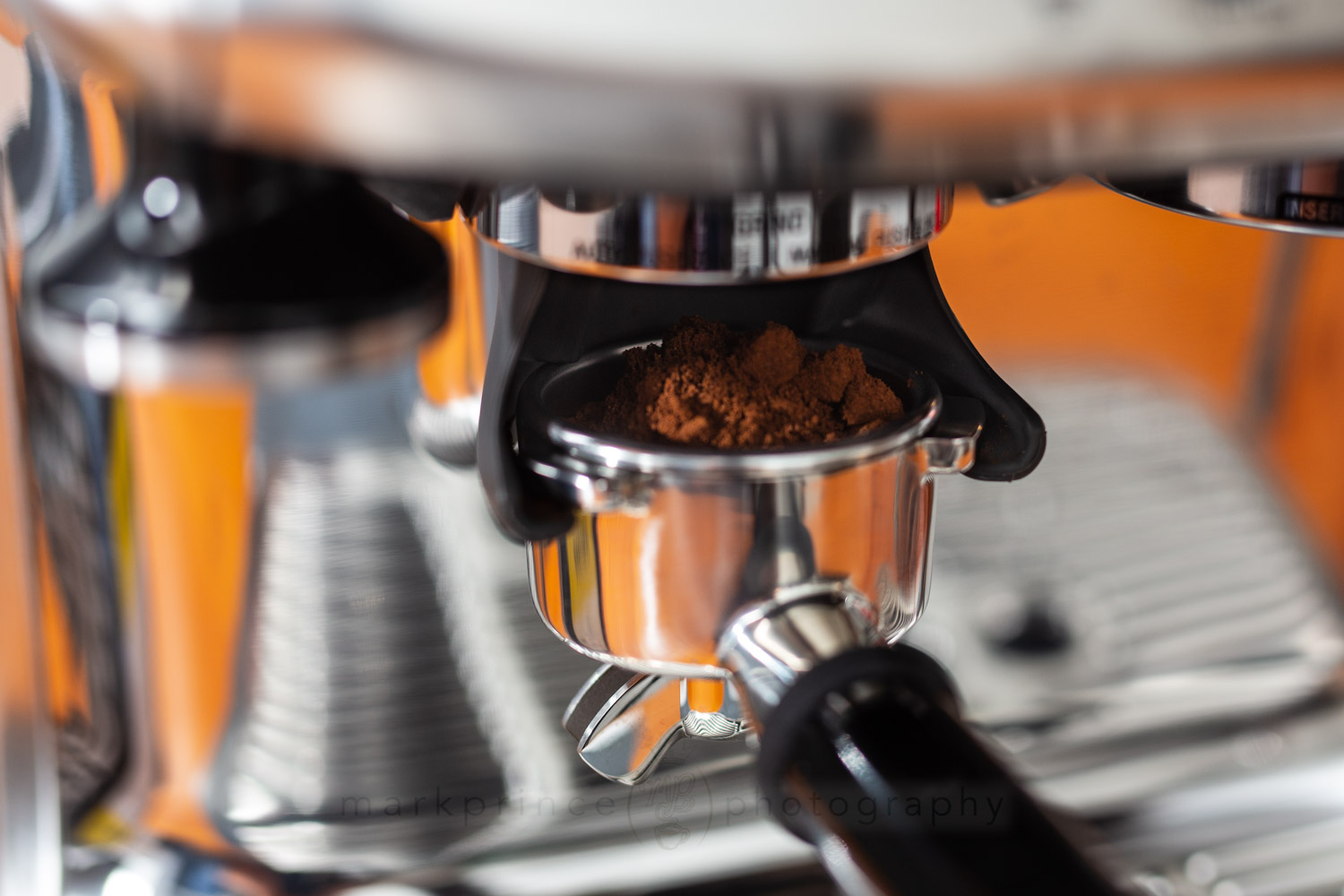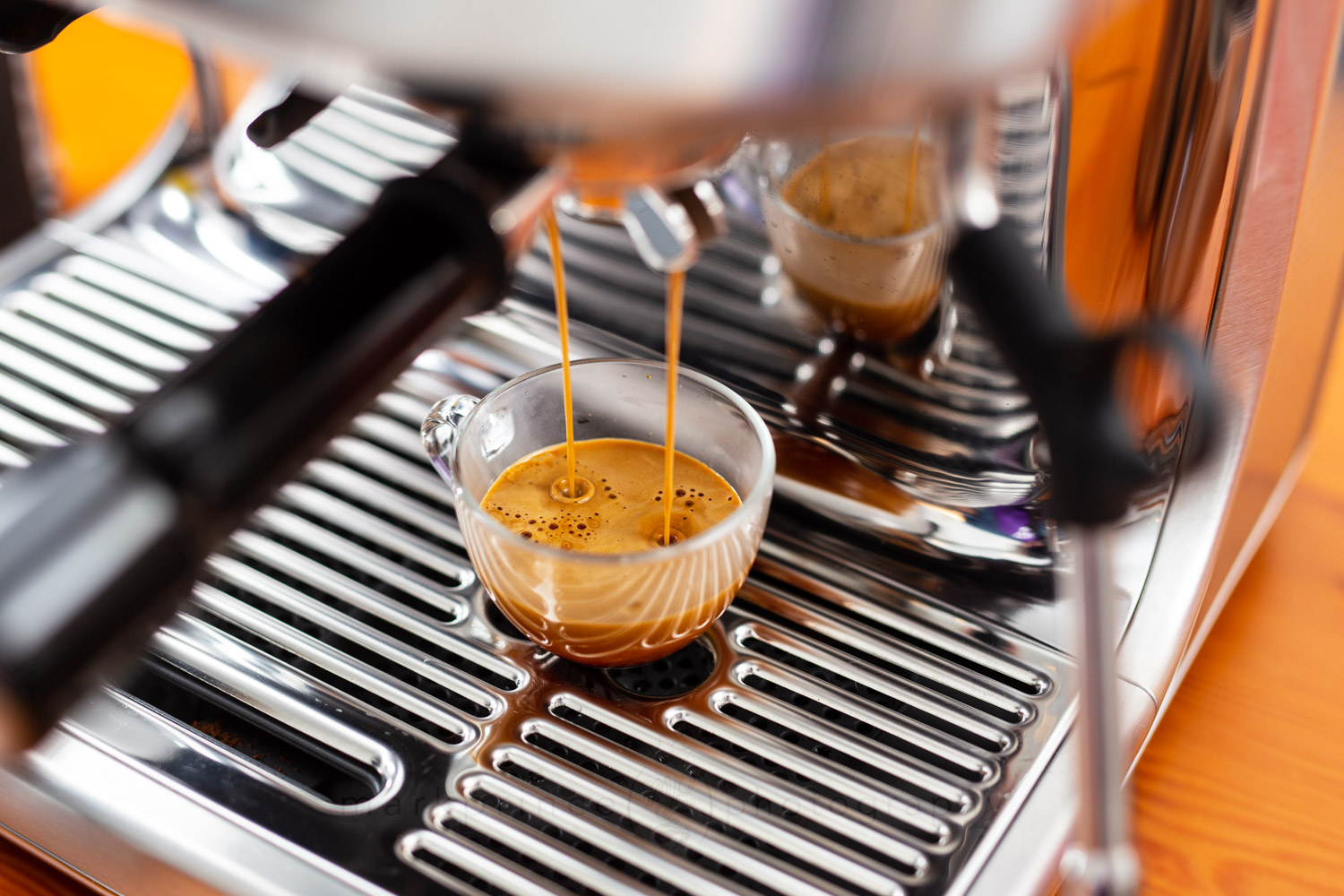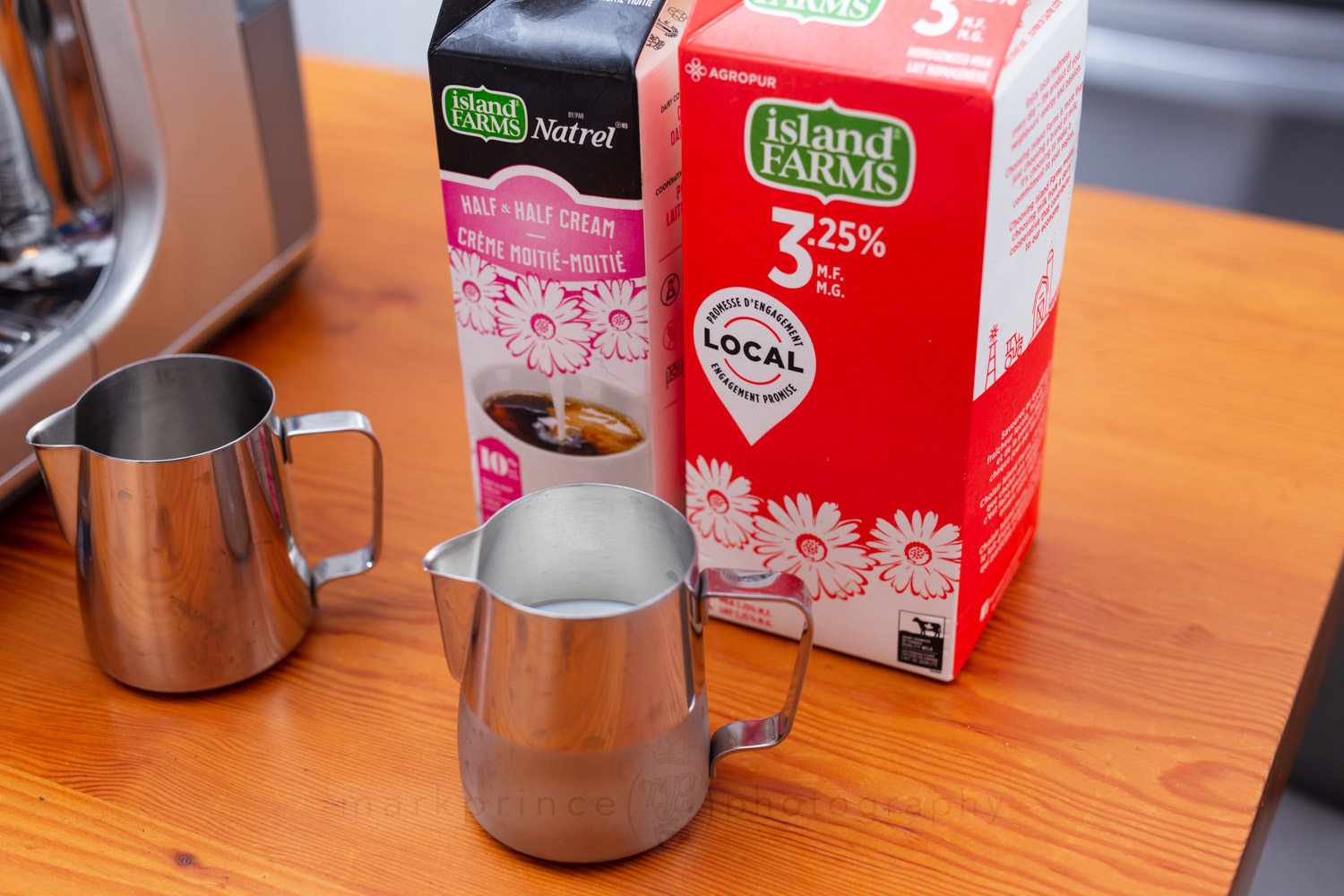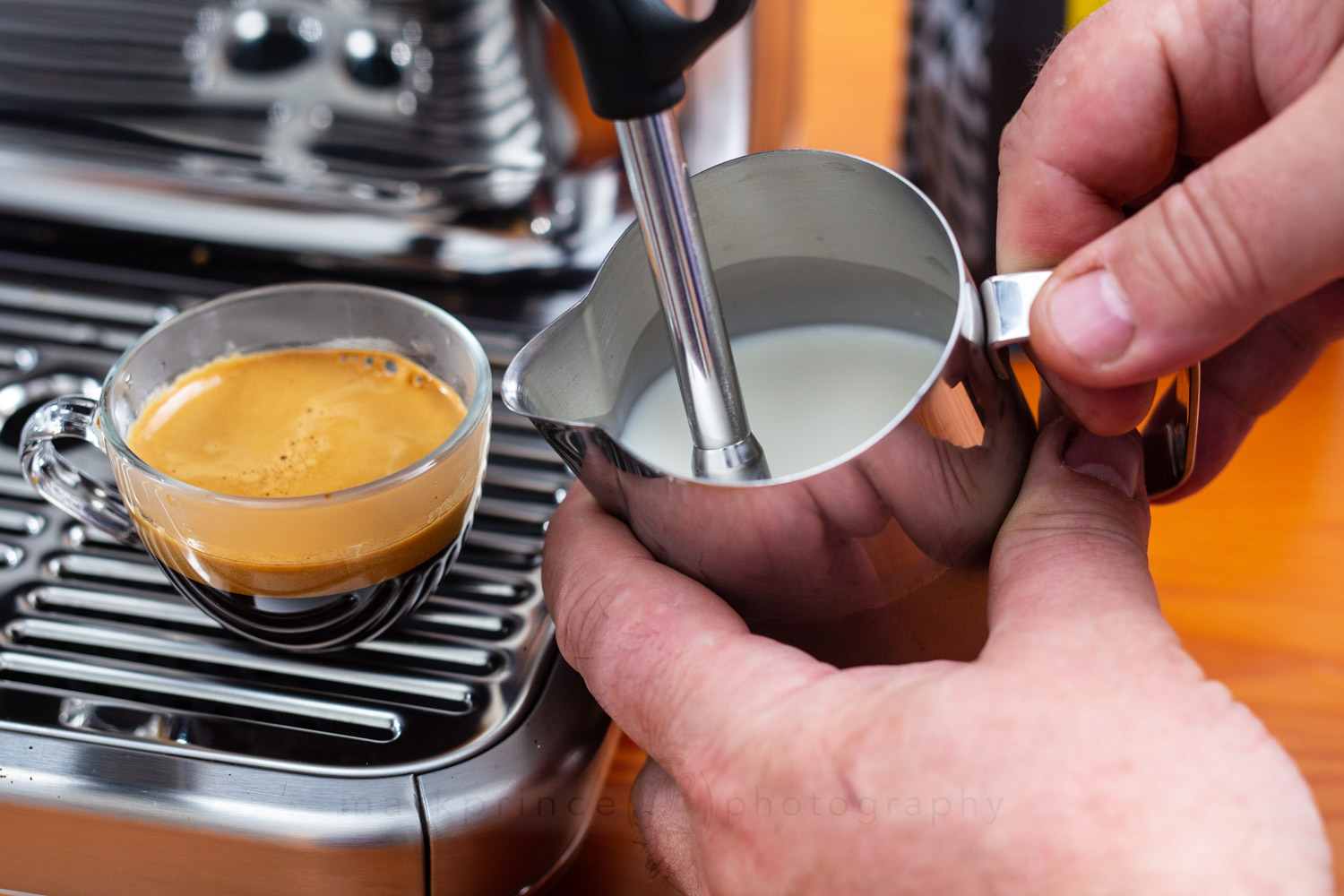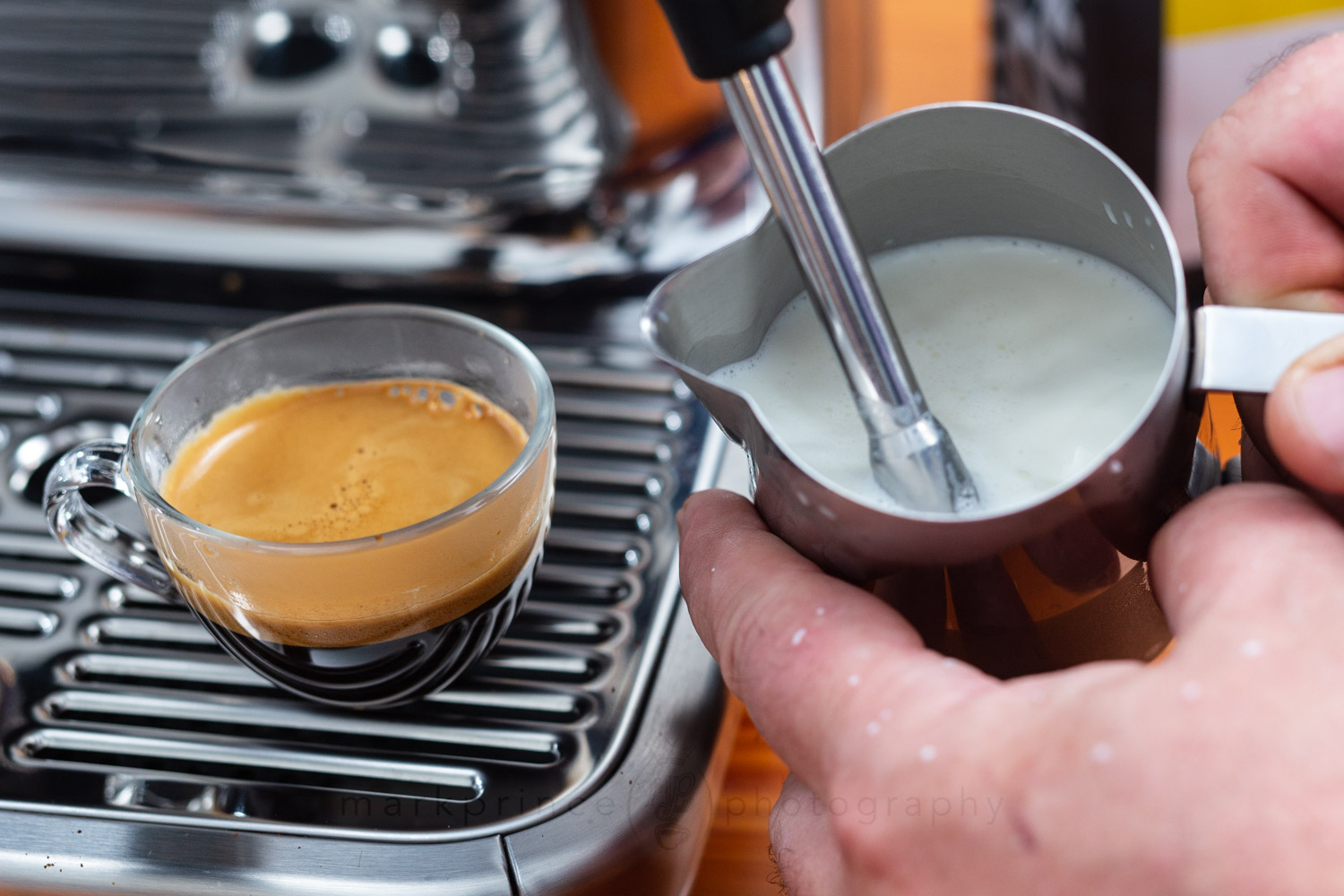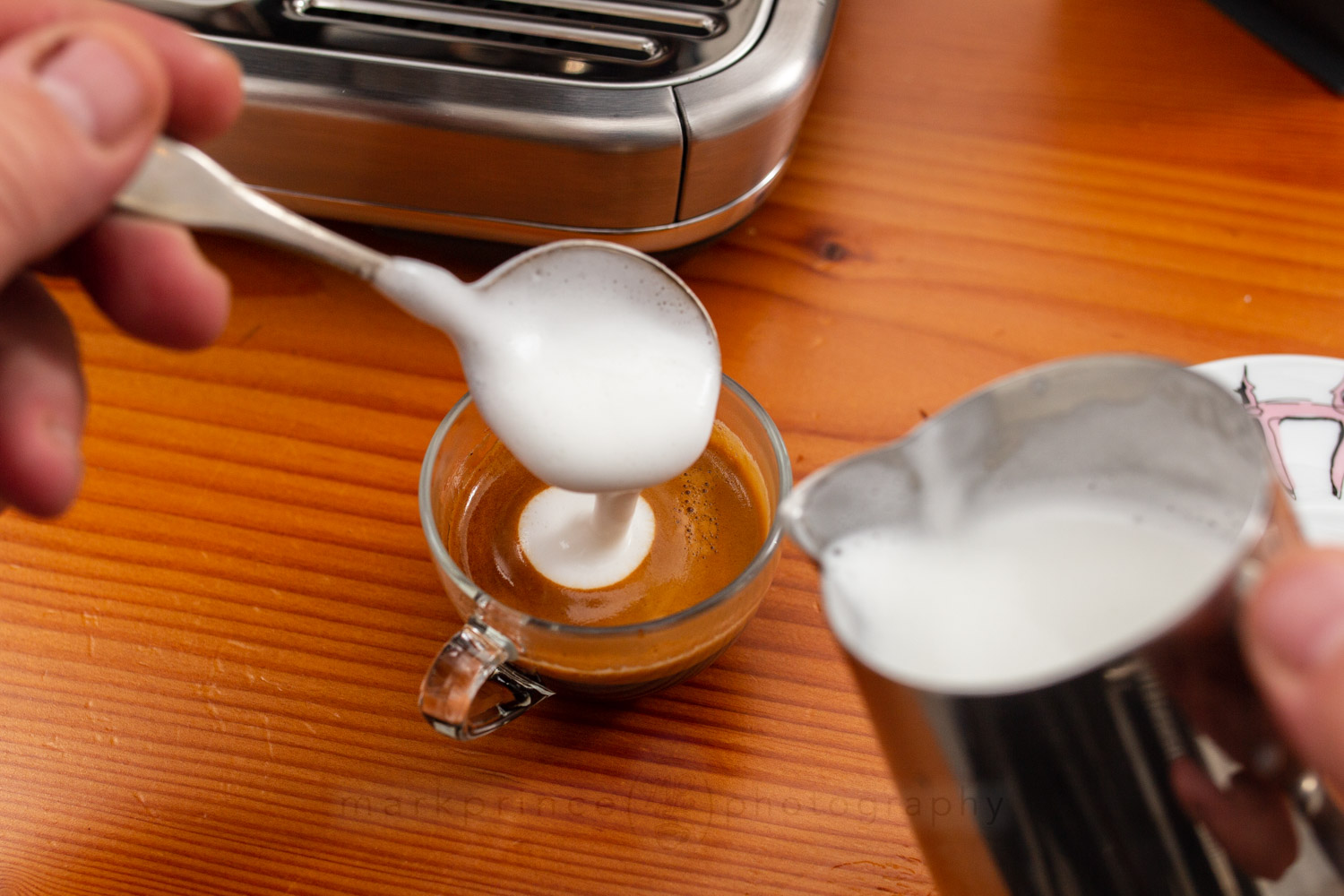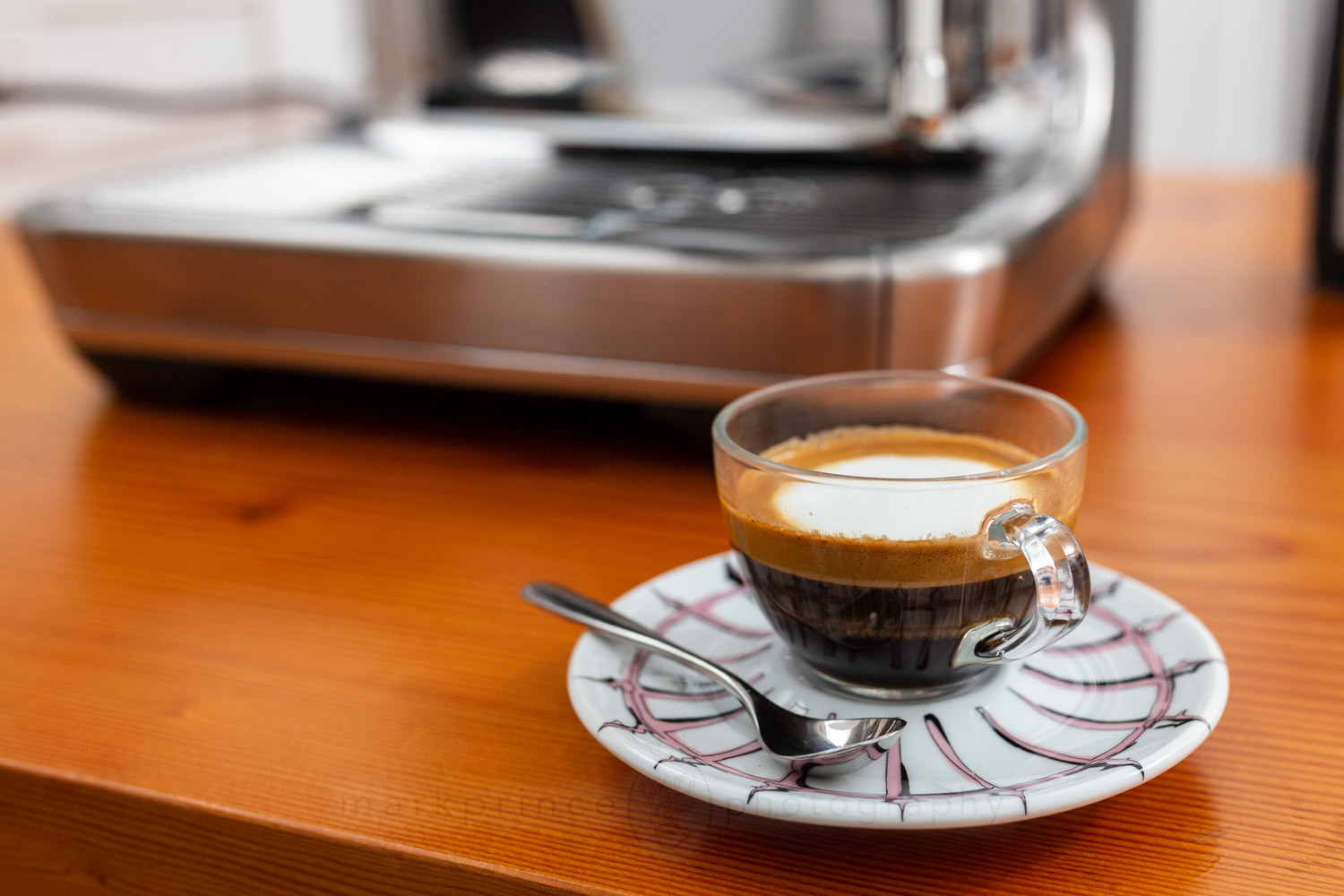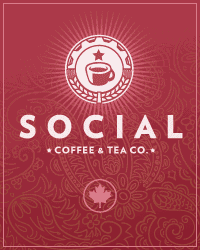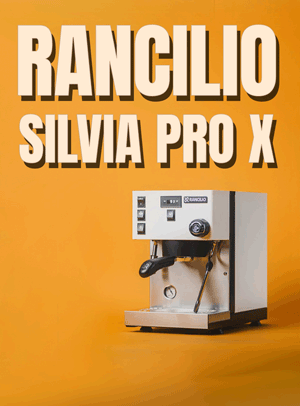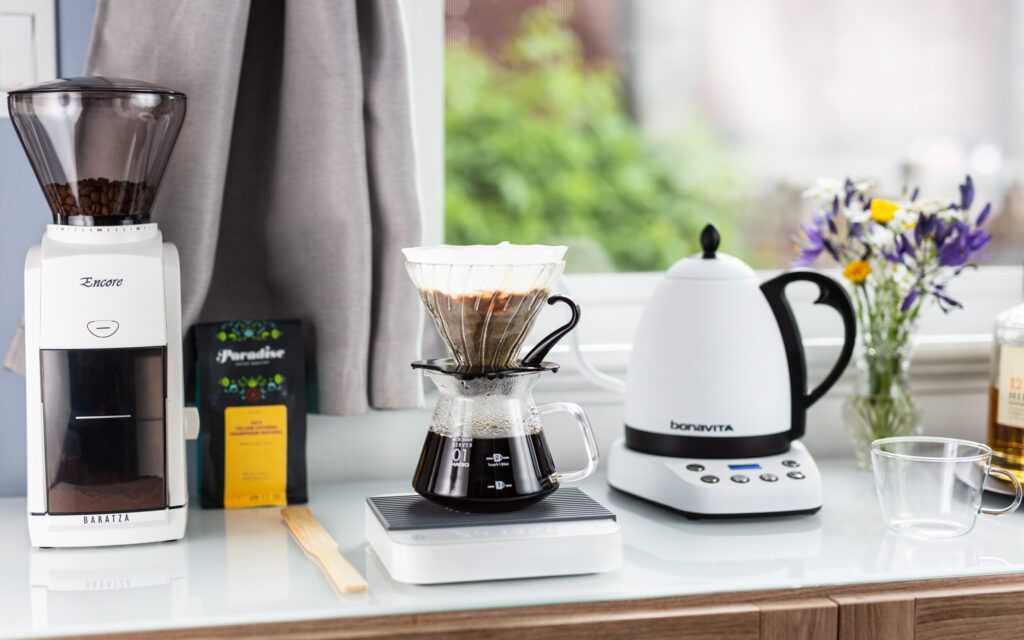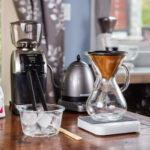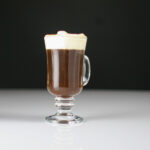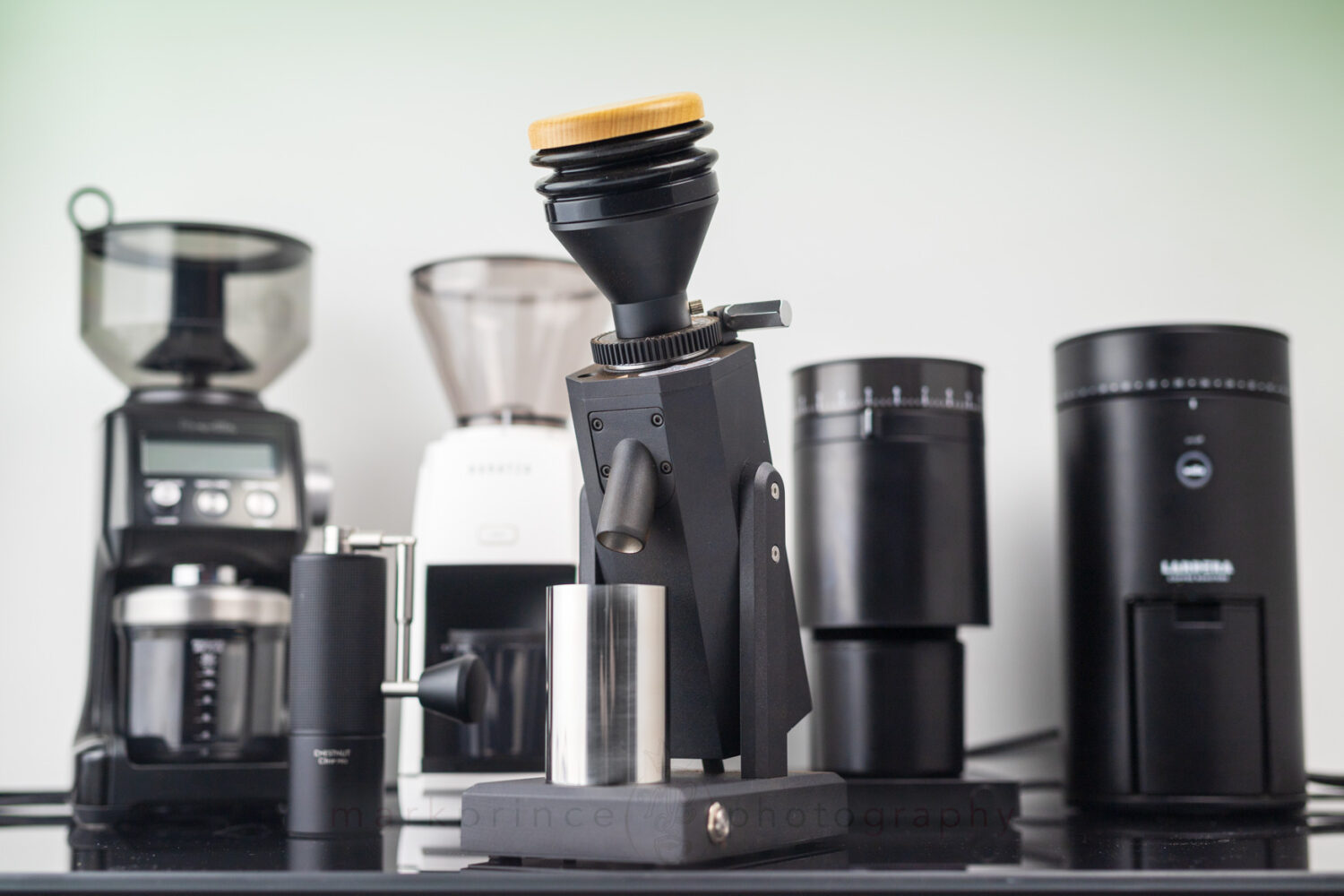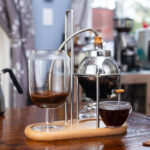How to Make a Macchiato
The traditional, authentic, Italian Macchiato doesn’t use a lot of milk or foam. In fact, the “macchiato” word means “marked” in Italian, meaning you just mark or touch up the espresso shot with a dollop of foam. The drink is so commonly ordered in Italy that the baristas always have a pitcher of just frothed milk ready to go when building the drink. And it (generally) costs the same as an espresso; all the barista does is drop a spoonful of foam on your espresso drink, and they don’t charge extra for that.
The traditional macchiato is a very espresso-forward drink. Like 96% espresso forward. You drink a traditional macchiato just like you’d drink an espresso – three or four nicely spaced out sips. The foam doesn’t really interacts with the coffee liquor, but does its magic on the crema, softening it and balancing it out (crema on it’s own is quite bitter). Here’s how to build both a single and a double.
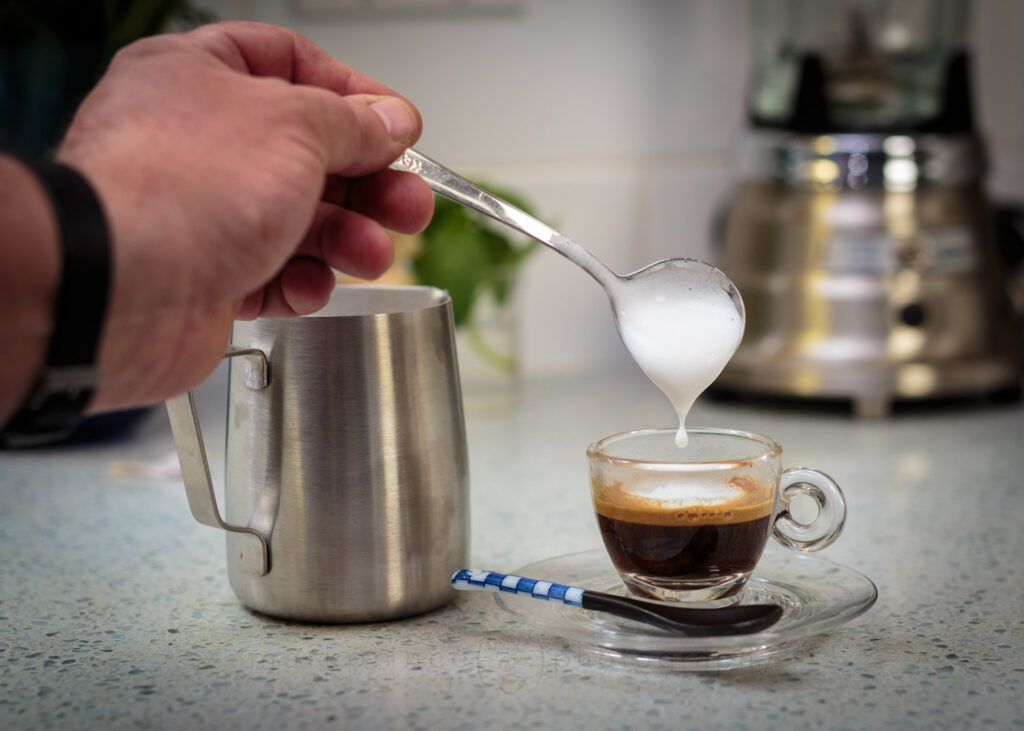
Time Needed: 4 minutes
Equipment Cost $ 450
Necessary Supplies
Necessary Tools
Traditional Macchiato Steps
Preheat the Cup
We’re dealing with a tiny beverage, and maintaining heat is important. Preheat your machine, and especially your espresso cup.
Prepare the Portafilter
Grind out your usual espresso dose (we use 18g in this Breville Barista Pro), level, tamp, and lock the portafilter in the machine.
Pull Your Espresso Shot
Here, decide if you want two singles or one double. We’re brewing a double in this example.
Prepare Milk for Microfoam
While your shot is brewing, get your milk ready. We like to go with about 100ml of whole milk, and add about 25ml of half and half (10% cream) milk for an added creamy sweet boost.
Make Low Temp Microfoam
Here’s a secret to a fantastic traditional macchiato: you don’t have to steam milk up to the usual 65C (150F); in fact, your microfoam will be better tasting and have a more sweeter impact if you only steam to about 40C (105F). And that’s our target – create paint-like microfoam but don’t go hot
Finish Milk Stretching
Once the steam pitcher is the slightest bit warm to your hand’s touch, it’s time to end the milk stretching and steaming in general. This is a good rule of thumb for maximizing the milk’s sweetness for your drink. Note I have not submerged the wand at this point.
Spoon Out the Foam
Take a healthy spoonful of the milk froth and dollop it right onto the espresso shot, creating a nice white cap. If you’ve brewed a double shot (like we have here), two dollops of foam will do.
For a variation on this drink try building an old favourite of mine — a drink I used to order from JJ Bean in Vancouver as far back as 2008! — which we called the half and half (also known as the one and one). Prep a traditional double espresso; put two cups under the spouts and brew two shots. Froth up some milk, just to around 105F or so, and then dollop some foam into one of the two cups. Enjoy a single shot espresso, and a single shot macchiato!
MacchiatoHistory and Development
The macchiato is essentially a superficial “macho” move by men in Italy who couldn’t bear the stigma when ordering the afternoon child’s drink (the cappuccino), but absolutely needed a bit of milk in their espresso because they didn’t like espresso’s straight bitterness.
I’m not kidding. The cappuccino and its variants have existed in Italy almost as long as the espresso machine has (even machines from the 1910s had steam arms for frothing and heating milk); but it’s always been seen as a child’s drink, or at best, the first coffee you have in the morning. To order a cappuccino after 12pm marked you as less than a man, in Italian culture. It’s ridiculous, but it’s also true, and even true to this day (the stigma, that is).
Some people just don’t like espresso without milk. But they want to take part, so at some point in the 1920s or 1930s in Italy, the idea of dropping a dollop or two of milk foam onto a shot of espresso was invented, and it got its name by customers asking for their espresso to be “stained” or “marked” by some white milk foam. No stigma. No judgement. Just someone who wants their espresso a tiny bit extra fancy.
There’s some debate that the above origin story isn’t quite accurate; I’ve seen a few pundits and book writers claim that, in the 1920s, there were two ways to get “espresso”: straight, or with a bit of steamed milk (like 20ml or less). Because it was sometimes hard for the servers to distinguish between the two drinks, especially in a dark restaurant or cafe, the bar men of the day would also spoon a dollop of foam on top of the milked espresso to “mark” it or distinguish it for the waiter, and thus the macchiato name was born that way.
I tend to go with the former origin story over the latter, because espresso with milk, from the earliest days, was a cappuccino (which gained its current name in the late 1940s; prior to that it was just called an espresso with milk), and no self respecting male in Italy would order espresso with milk after breakfast.
As a side note, there was (and still today is) another macchiato drink in Italy: the latte macchiato. In Italy, a “latte” is just a bowl of steamed milk (unlike the espresso based drink of Starbucks fame); a latte macchiato is a bowl of steamed milk “marked” with a bit of espresso on top. But I digress. Back to the macchiato itself.
The North American Macchiato
In North America, the drink was always served the traditional way — especially in authentic Italian cafes, but also in most upscale specialty coffee houses — until the late 1990s when Seattle’s Espresso Vivace cafe started really pushing latte art. That latte art extended to every beverage served… the latte, the cappuccino, the mocha, and the macchiato. Vivace also pulled ristretto shots exclusively, so there was more room in the espresso cup to “play with” in pouring latte art into a tiny <60ml cup.
The pursuit of latte art in all forms is what really drove the engorgement of the macchiato in US and Canadian cafes. It was another kind of macho move; if you couldn’t pour latte art into a tiny espresso demitasse cup, well, you weren’t worth your salt. (I’m to blame as much as anyone for this kind of groove; I actually organized “latte art thimble pouring competitions” back in 2002 and 2003 – again, not kidding!). But even the best latte art pourers in the world are going to need 15, 20, 25ml or more of liquid and foam to create their art in the espresso cup, and because of this, the macchiato in North American cafes became a bigger drink, one where the ratio of espresso to milk froth and steamed milk is as much as 1:1 (though some places still keep it to a 1:0.5 ratio of espresso to milk).
Both drinks are fantastic in their own right. But both have a very different taste profile.
The traditional macchiato, the “marked” with a dollop of foam that has been frothed up to maintain as much lactose sweetness as possible, is an interesting journey into espresso tasting with the foam mainly influencing the crema.
The 1:>1 ratio macchiato is also fantastic, but the milk interacts with the entire drink and definitely changes the taste profile compared to a straight espresso. Give both a try and don’t even bother picking one over the other – just enjoy both in their own regard!
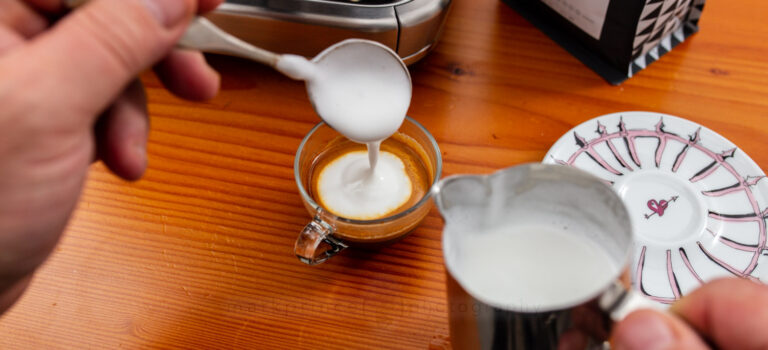
The True Traditional Macchiato

Support CoffeeGeek
If you enjoy and learn from this resource, please consider making a one time or recurring donation to help support our work and fund purchases for future reviews.
MacchiatoA Note on Temperatures
I’ve referenced this several times, but let me be clear: if you’re doing a traditional macchiato, only froth up the milk until the pitcher is barely warmer than your own hand.
That’s really all you need, and you benefit from maximizing the tangible, discernible sweetness that the milk’s lactose has to offer. Milk is literally at its sweetest when it is roughly the human body temperature: just under 100F or under 40C.
You’re increasing the milk’s discernible sweetness by warming it up, and holding it at that max sweet level by not going hotter than 105F (40C) for your microfoam.
For the same reason, you should only stretch your milk for cappuccinos, lattes, and yes, North American macchiatos, until the pitcher is roughly the temperature of your hand. Then submerge the wand fully to continue heating up the liquid milk.
This results in your foam retaining max lactose sweetness, while the milk underneath continues to heat (and the lactose converts to other elements and diminishes in the milk).






